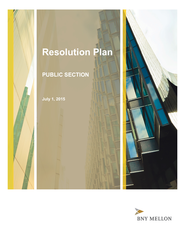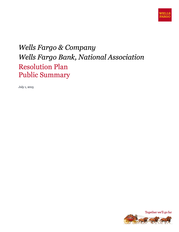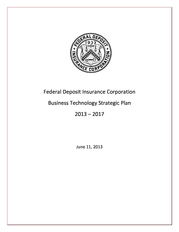Description
Federal Deposit Insurance Corporation
2015 Annual Performance Plan
Banks increased their investment securities portfolios by $217.3 billion (7.2 percent), as holdings
of U.S. Treasury securities rose by $212.7 billion (110.4 percent). Insured institutions also
increased their balances with Federal Reserve banks by $215 billion (18.4 percent). Total loan
and lease balances increased by $416.4 billion (5.3 percent), led by growth in C&I loans (up
$148.9 billion, 9.5 percent).
Real estate loans secured by nonfarm nonresidential properties increased by $40.7 billion (3.7 percent), while real estate loans secured by multifamily residential properties rose by $34.5 billion (13.1 percent). Much of the growth in assets was funded by increases in deposit balances. Deposits in domestic offices increased by $576.9 billion (5.9 percent) in the 12 months ended December 31. Most of the growth occurred in large-denomination accounts, as estimated insured deposits increased by only $192.7 billion (3.2 percent).
Nondeposit liabilities increased by $163.1 billion (8.7 percent), as advances from Federal Home Loan Banks rose by $58.1 billion (14.3 percent). Equity capital increased by $91.4 billion (5.6 percent). At the end of December, 291 insured institutions on the FDIC’s “Problem List,” with total assets of $87 billion were on the FDIC’s “Problem Bank List”. A year earlier, 467 problem institutions with combined assets of $153 billion were on the Problem Bank List. Problem banks are identified as institutions with financial, operational, or managerial weaknesses that threaten their viability, although historical analysis shows that most problem institutions do not fail. In 2014, 18 banks with combined assets of $2.9 billion failed.
At the end of December, the Deposit Insurance Fund (DIF) balance stood at $62.8 billion, up from $47.2 billion a year earlier. The reserve ratio was 1.01 percent, compared to 0.79 percent on December, 31, 2013. 69 .
Real estate loans secured by nonfarm nonresidential properties increased by $40.7 billion (3.7 percent), while real estate loans secured by multifamily residential properties rose by $34.5 billion (13.1 percent). Much of the growth in assets was funded by increases in deposit balances. Deposits in domestic offices increased by $576.9 billion (5.9 percent) in the 12 months ended December 31. Most of the growth occurred in large-denomination accounts, as estimated insured deposits increased by only $192.7 billion (3.2 percent).
Nondeposit liabilities increased by $163.1 billion (8.7 percent), as advances from Federal Home Loan Banks rose by $58.1 billion (14.3 percent). Equity capital increased by $91.4 billion (5.6 percent). At the end of December, 291 insured institutions on the FDIC’s “Problem List,” with total assets of $87 billion were on the FDIC’s “Problem Bank List”. A year earlier, 467 problem institutions with combined assets of $153 billion were on the Problem Bank List. Problem banks are identified as institutions with financial, operational, or managerial weaknesses that threaten their viability, although historical analysis shows that most problem institutions do not fail. In 2014, 18 banks with combined assets of $2.9 billion failed.
At the end of December, the Deposit Insurance Fund (DIF) balance stood at $62.8 billion, up from $47.2 billion a year earlier. The reserve ratio was 1.01 percent, compared to 0.79 percent on December, 31, 2013. 69 .









